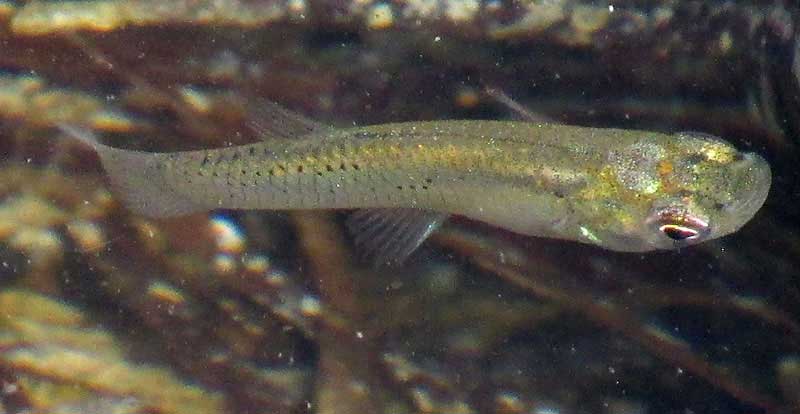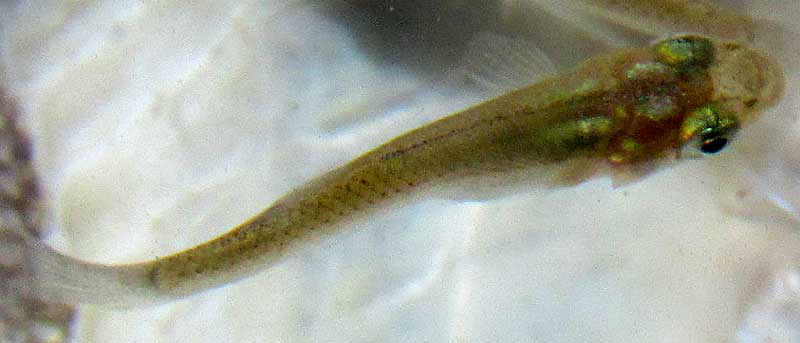Excerpts from Jim Conrad's
Naturalist Newsletter

from the June 7, 2015 Newsletter issued from Río Lagartos, on the Yucatan Peninsula's northern coast (~N21.60°, ~W88.16°), Yucatán state, MÉXICO
YUCATAN GAMBUSIA
At a culvert beneath a road on the levee separating the estuary from mangrove swamp on the southeastern shore just south of Río Lagartos, as the tide came in, brackish water from the estuary flowed into a shallow pool on the mangrove side of the culvert. The pool's surface worked with thousands of small, brown fish about an inch long (25mm), such as the one shown above.
Another shot of a different fish, better showing some of the fish's internal organs through its semitransparent flesh, is shown below:

These fish swam with their lower jaws projected forward and upward, enabling them either to "gulp air" at the water's surface, or skim microscopic matter floating atop the water.
This behavior, the projecting lower jaws, the semitransparent bodies and the general appearance were very familiar to me, for I grew up surrounded by western Kentucky drainage ditches teeming with such fish -- mosquito fish, Gambusia affinis. We don't have Gambusia affinis here, but one Gambusia species is listed for the Reserve, and that's GAMBUSIA YUCATANA, normally called the Yucatan Gambusia, and known to be abundant in Ría Lagartos estuary. The species is endemic to the Yucatan Peninsula, Belize and part of Guatemala.
The quiet, house-size pool of water beside the road suddenly erupted at the far end with a wave of silvery, noisily splashing water that spread across the pool in a fast-moving arc. It was Yucatan Gambusias leaping from the water in unison, and I wondered what they were up to. A couple of minutes passed before the same thing happened again. Ultimately several such fast-moving waves came rushing across the otherwise quiet little pool. Then I saw the cause: A Double-crested Cormorant popped up from below the water. It'd been diving in the stream draining from the mangroves into the pool.
Suddenly another wave erupted but this time it began right beside me and rushed in the opposite direction. As soon as the water calmed enough to see below the surface, there was a needlefish with a Yucatan Bambusia crosswise in its narrow snout, about to be gulped down.
This was a good lesson about one use the tidewater ecosystem has for Yucatan Bambusias: They make fine eating for any number of hungry predators.